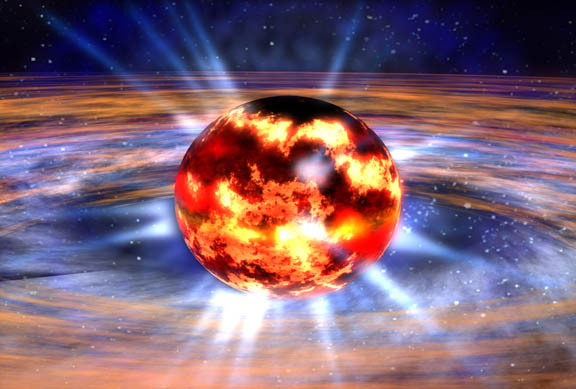The Formation of Heavy Elements Could Have Been Assisted by Primordial Black Holes
Astronomers often state that humans are the result of stars, which acted as furnaces that fused hydrogen and helium to create the necessary elements for life through stellar nucleosynthesis.According to the late Carl Sagan, “The nitrogen in our DNA, the calcium in our teeth, the iron in our blood, the carbon in our apple pies were made in the interiors of collapsing stars. We are made of star stuff.”
However, what about the heavier elements found in the periodic table, such as gold, platinum, and uranium?Astronomers believe that most of these “r-process elements,” which are much heavier than iron, were formed either during the aftermath of massive star collapses and the resulting supernova explosions, or through the merging of binary neutron star systems.
George Fuller, a theoretical astrophysicist and physics professor who leads UC San Diego’s Center for Astrophysics and Space Sciences, explained that a different type of furnace was necessary to create gold, platinum, uranium, and other elements heavier than iron. These elements likely formed in an environment abundant with neutrons.In a recent publication in the journal Physical Review Letters on August 7, George Fuller, along with UCLA’s Alex Kusenko and Volodymyr Takhistov, proposed another mechanism through which stars could have generated these heavy elements. They suggest that tiny black holes could have interacted with and been captured by neutron stars, subsequently leading to their destruction.
Neutron stars are the smallest and densest stars known to exist, with a density so high that a mere spoonful of their surface would weigh three billion tons.

Many astronomers speculate that tiny black holes could have been created during the Big Bang and may now contribute to the composition of dark matter, which is the unseen and non-interacting substance that exists in the universe. According to Fuller and his colleagues, if these tiny black holes are distributed in a similar manner to dark matter and coexist with neutron stars, interesting physics could occur.Their research suggests that in rare cases, a neutron star could capture one of these black holes and be consumed from the inside out. This violent process could result in the ejection of dense neutron star matter into space.
Fuller explains, “Black holes produced during the Big Bang can infiltrate a neutron star and consume it internally. In the final moments of the neutron star’s destruction, a significant amount of neutron-rich material is expelled, which can account for the observed abundance of heavy elements.”
He further adds, “As the neutron stars are consumed, they gain rotational momentum and expel cold neutron matter, which then expands, heats up, and forms these elements.”This process of generating the heaviest elements on the periodic table could also provide explanations for various unresolved mysteries in the universe and our own Milky Way galaxy.Fuller states, “Since these events occur infrequently, it is understandable why only one in ten dwarf galaxies contains heavy elements. The systematic destruction of neutron stars by primordial black holes aligns with the scarcity of neutron stars in the galactic center and dwarf galaxies, where black hole density should be high.”
Additionally, the scientists have calculated that the ejection of nuclear matter from tiny black holes consuming neutron stars could account for three other unexplained phenomena observed by astronomers.
Fuller stated that these are a unique manifestation of infrared light, often referred to as a “kilonova,” which emits radio waves that could potentially elucidate the enigmatic Fast Radio Bursts originating from obscure origins in the vast cosmos. Additionally, X-ray observations have detected positrons in the galactic center, further adding to the enigma. Each of these phenomena has been a longstanding mystery, and it is truly astonishing that the resolution to these seemingly unrelated puzzles may lie in the cataclysmic demise of neutron stars caused by minuscule black holes.
This article is republished from PhysORG under a Creative Commons license. Read the original article.
Do not forget to share your opinion with us to provide you with the best posts !



0 Comments